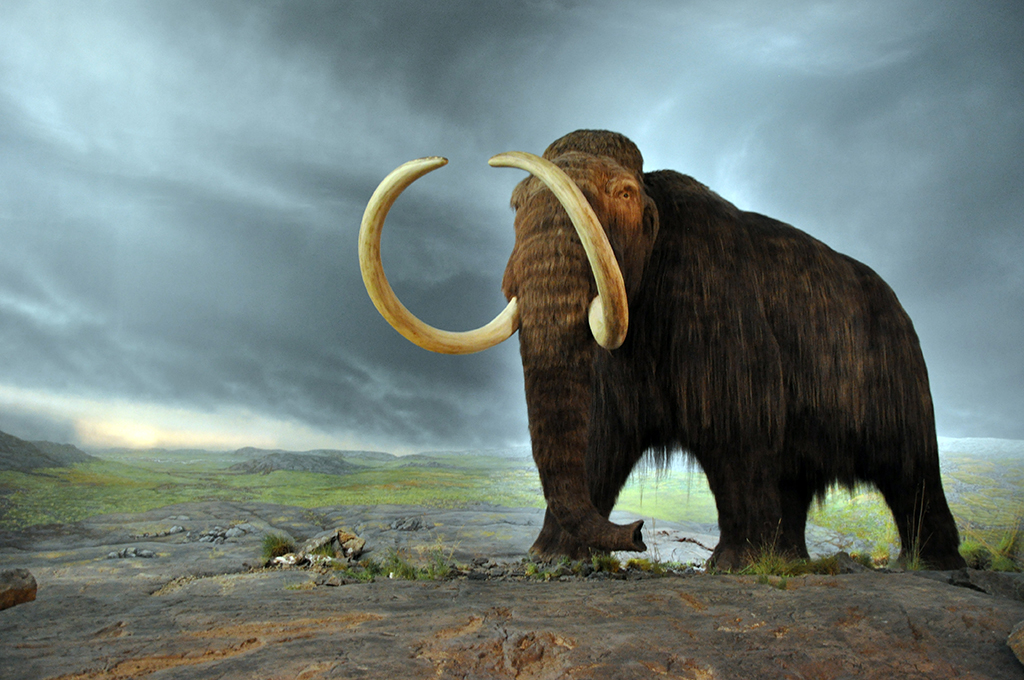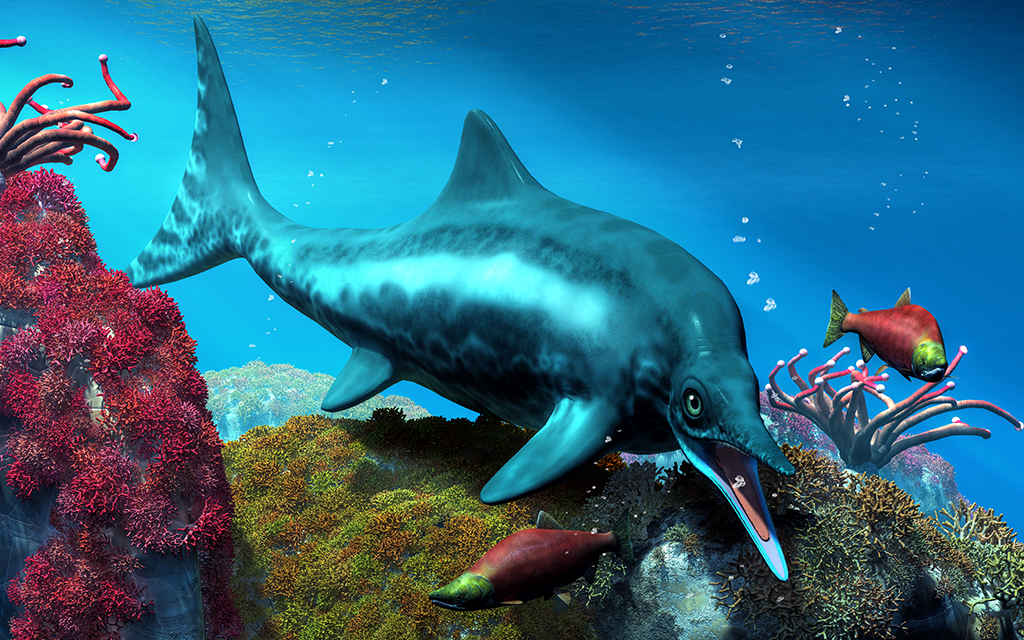From mammoth tusks to reptilian remains, Scotland is home to a surprisingly large number of fossil finds.
Over the years, many prehistoric discoveries have been made, and here we round up 10 of our favourites.
1. Giant scorpion
In 2010, while walking in north east Fife, Dr Martin Whyte from the University of Sheffield stumbled upon the tracks of a giant six-legged sea scorpion. Hibbertopterus would have lived around 330 million years ago and would have measured around two metres long by one metre wide. The trackway was preserved in sandstone and was the largest known trackway of any invertebrate.
2. Megalosaurus
The fossilised footprints of a large meat-eating dinosaur were discovered on a beach on Skye by local resident Cathie Booth in 2002. Booth took home a rock with a smaller footprint embedded in it to show her husband, which led the couple to fi nd the larger prints just along the beach. The carnivore would have lived around 160-165 million years ago, in the mid-Jurassic age, would have grown to nine metres in length and weighed about a tonne, and was believed to be a pre-cursor to the Tyrannosaurus Rex.
3. Woolly mammoth

Mammoth tusks were first discovered in Scotland in 1816 in a quarry near Kilmaurs in Ayrshire. Pieces of tusk have also been uncovered on Cliftonhall Estate near Edinburgh and near Kilmarnock. The tusks had been buried for around 46,000 years. Woolly mammoths could reach heights of four metres, with tusks growing to around five metres long.
4. The Bearsden shark
The best shark fossils in Scotland were found by Stan Wood in the shale beds of Bearsden’s Manse Burn in Glasgow in 1981. The thick mud on the bed of the lagoon where the shark died meant that its skeleton was extremely well preserved, so intact was the fossil that the shark’s last meal could be seen in its stomach. Akmonistion zangerli is on display at The Hunterian Museum in Glasgow. Evidence of flying sharks, known as Iniopterygiformes, were also found in Bearsden. The fish had wing-like projections which would have allowed them to glide like flying fish.
5. Lizzie the Lizard
The remains of a lizard were discovered in a quarry near Bathgate in West Lothian in 1984. Nicknamed Lizzie, the creature lived around 350 million years ago. Some scientists believe that it is one of the world’s first reptiles, while others consider it to be an amphibian. Westlothiana lizziae measured around 20 centimetres long and had very sharp teeth. Like the Bearsden shark, Lizzie was discovered by real-life dinosaur hunter Stan Wood.
6. Elgin reptiles
Evidence of a range of reptile species were discovered in sandstone in Elgin, Morayshire between the 1830s and 1997. Two hundred of these specimens from the Permian and Triassic periods are at Elgin Museum, with the best examples on display. The reptiles would have lived in desert conditions 250 million years ago.
7. Ichthyosaur

The remains of a four-metre-long aquatic dolphin-like reptile was discovered by amateur fossil enthusiast Brian Shawcross at Bearreraig Bay on the Isle of Skye in 1959. Dearcmhara shawcrossi lived 170 million years ago and would have grown to 14 feet long from nose to tail. Fragments of the animal’s bones were studied for 50 years before being named after the man who discovered them and the Gaelic word for marine lizard.
8. Giant centipede
On the east coast of Arran the rocks hold evidence of Arthropleura, a monster Myriapod which grew up to 2.6 metres long and was one of the largest insects ever known. Scientists believe that the centipede may have had powerful jaws, and may have eaten small animals and plants. The centipede’s rows of footprints have also been found preserved in rocks near Crail in Fife.
9. Pre-historic spiders
The fossilised remains of trigonotarbid, a spider-like creature, were found in the Rhynie area of Aberdeenshire. The spiders, although small, had poisonous fangs for killing, but unlike today’s arachnids, could not spin webs.
10. Skye Sauropods
Hundreds of footprints, made by large plant-eating dinosaurs, have been found on the Isle of Skye. Known as the dinosaur capital of Scotland, the rich Middle Jurassic fossil fauna of Skye is gradually being revealed with new discoveries continuing to be made. These include some of the first fossil evidence of dinosaur parenting. Housed at Staffin Museum, a rock slab shows the footprints of baby dinosaurs, together with the print of an adult. It is expected that Skye is also home to fossil remains of flying reptiles, and confirmation of this will firmly place the island in the international dinosaur hall of fame.
TAGS

